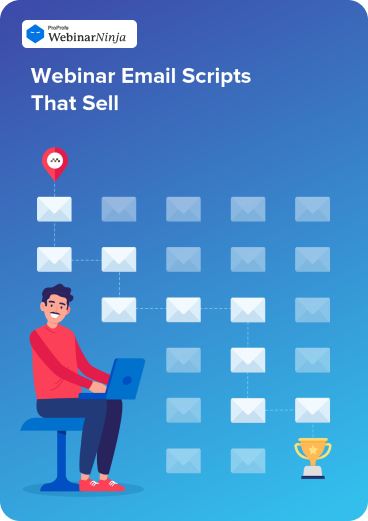
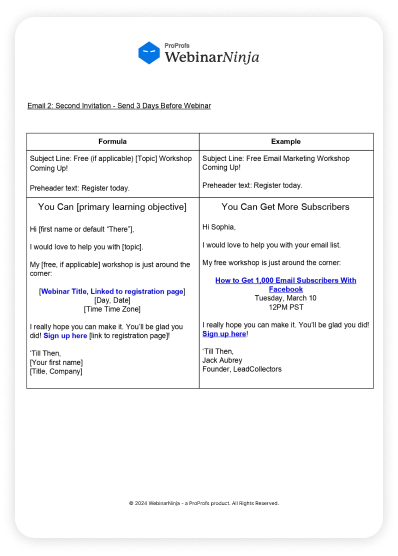
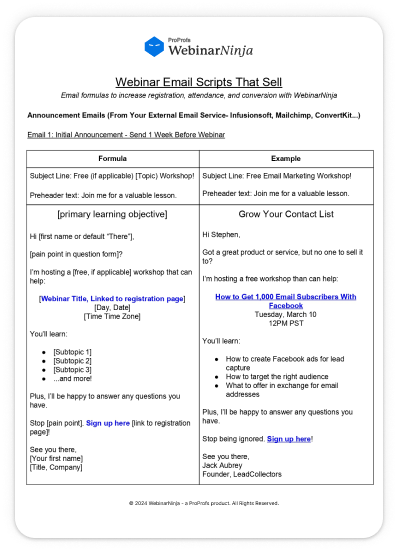
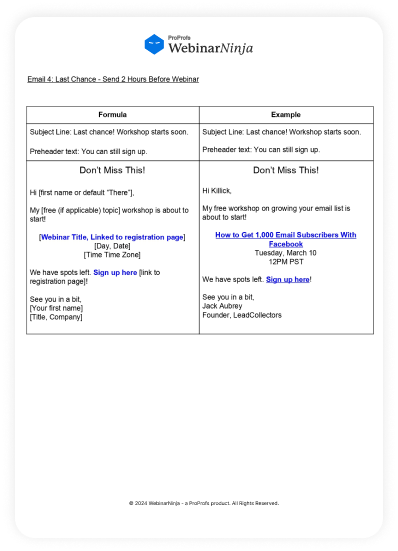
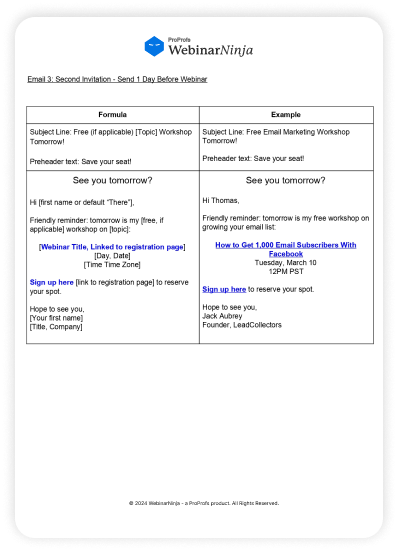
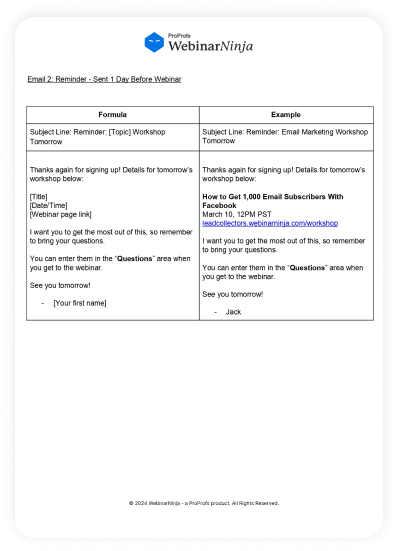
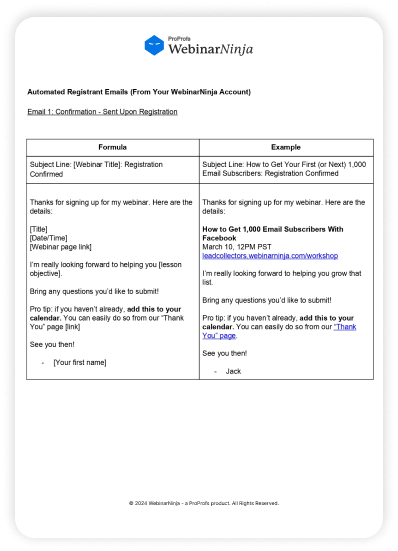
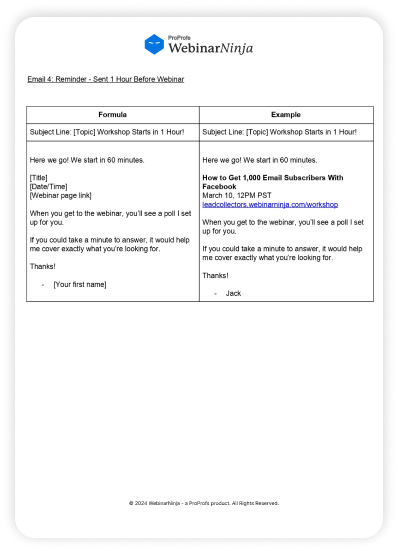
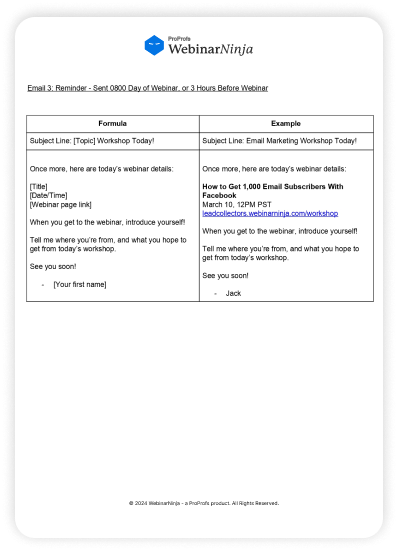
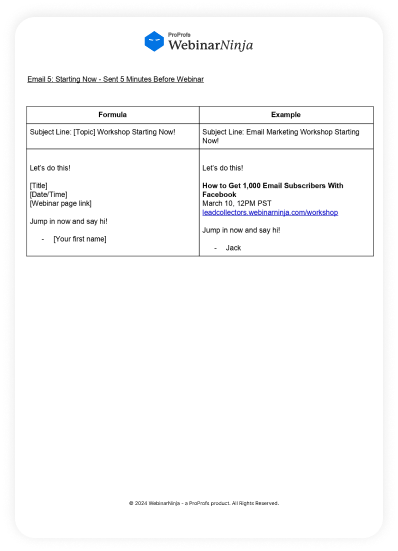
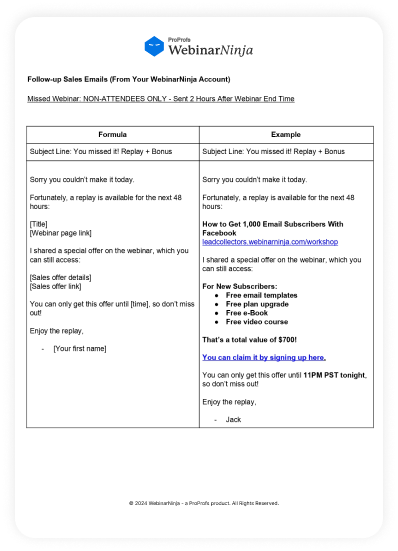
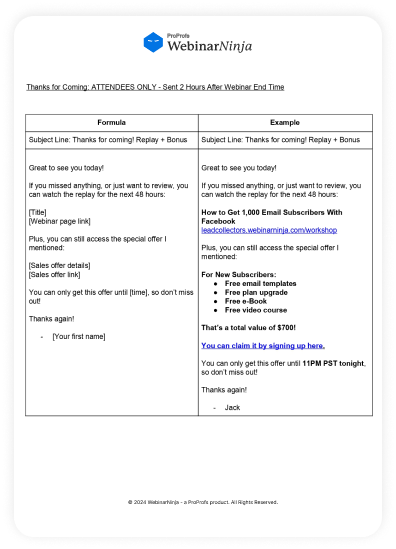
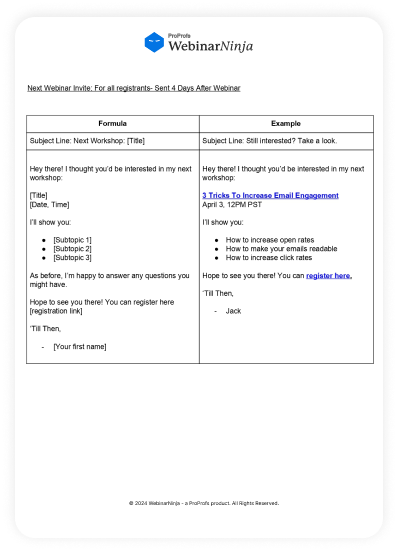
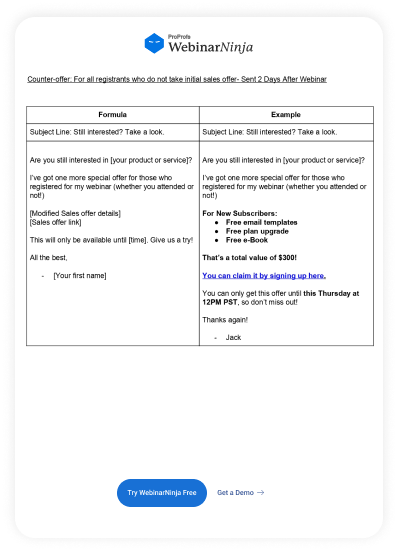
To create an effective webinar email, ensure that your message is engaging, informative, and compelling enough to encourage recipients to register and attend.
Keep it short and to the point, highlight the webinar's benefit or unique aspect, and use action words to create a sense of urgency.
If possible, greet the recipient personally and clearly state the purpose of the email and what the webinar will cover.
Explain what attendees will learn and how it will benefit them, and use bullet points for easy reading.
Include the date, time, and duration of the webinar, and mention any special guest speakers or panelists.
Use a prominent button or link for registration, and make sure the CTA stands out visually.
Include testimonials or past success stories if available, and mention the number of past attendees if impressive.
Ensure your email looks good on both desktop and mobile devices, and use responsive design and test on multiple devices.
Send follow-up emails to those who registered, and include reminders as the webinar date approaches.
Promoting a webinar through email marketing is a powerful strategy to attract attendees and keep them engaged before and after the event. Here are some tips to help you effectively market your webinar:
Crafting a compelling subject line is essential to grab attention. Highlight the value of the webinar, including key benefits and what attendees will learn. Include speaker bios to add credibility. Use a clear and prominent call-to-action (CTA) button to facilitate easy registration.
Target specific segments of your audience who will find the webinar topic most relevant. Utilize previous engagement data to personalize invitations, making them more appealing and likely to result in registrations.
Schedule reminder emails leading up to the event. It's a good practice to send at least three: one week before, one day before, and one hour before the webinar. Each reminder should highlight different aspects of the webinar to keep the content fresh and engaging for potential attendees.
Set up automated email workflows to send confirmation emails upon registration. Including calendar invites ensures that attendees can easily add the webinar to their schedules, reducing the likelihood of no-shows.
Sharing snippets or teasers of what will be covered in the webinar can build anticipation. Use short videos, infographics, or quotes from the speakers to grow interest and encourage registrations.
Expressing gratitude to attendees for joining the webinar helps maintain a positive relationship. Include a summary of the key points and any promised resources or materials to provide additional value.
Sharing a link to the webinar recording is beneficial for those who missed it or want to revisit the content. Highlighting specific timestamps for key segments makes it easier for viewers to navigate the recording.
Providing supplementary materials such as eBooks, whitepapers, or related blog posts encourages further learning and engagement. This approach helps keep the audience engaged even after the webinar.
Including a post-webinar survey is crucial to gathering feedback on the webinar’s content, delivery, and overall experience. This feedback can help improve future webinars and better understand your audience's preferences.
Take the opportunity to promote your next webinar or related events in your follow-up emails. Early access or special offers can help build a loyal attendee base and ensure high attendance for future events.
Design follow-up email sequences to nurture leads generated from the webinar. Include personalized content based on their engagement and interests shown during the webinar to maintain their interest and move them through your sales funnel.
Email marketing is a highly effective tool for promoting webinars. Here are some of the major reasons why this is an effective technique:
Email marketing allows you to directly communicate with your target audience. Personalized emails, including the recipient's name and tailored content, can increase engagement rates and encourage webinar sign-ups.
Email marketing ensures that your webinar promotions reach a broad audience. Most professionals consider email as a primary communication channel, making it a reliable way to get your message across.
Email marketing platforms enable the segmentation of your audience based on various criteria such as demographics, past interactions, and preferences. This allows for targeted campaigns, ensuring that the right people receive the right message.
Compared to other marketing channels, email marketing is relatively low-cost and offers a high ROI. This makes it an excellent choice for promoting webinars, where the primary goal is to drive attendance without overspending on marketing efforts.
Email marketing provides detailed analytics on open rates, click-through rates, conversions, and more. These metrics allow you to measure the effectiveness of your campaigns and make data-driven decisions to optimize future webinar promotions.
You can set up automated email campaigns to nurture leads and remind registrants about the upcoming webinar. This automation ensures consistent communication with minimal manual effort, increasing the likelihood of high attendance rates.
Regular email communication helps build and maintain relationships with your audience. By providing valuable content and updates about your webinars, you can establish your authority in your niche and keep your audience engaged.
Email marketing can effectively drive traffic to your webinar landing page. By including compelling calls-to-action and engaging content, you can increase visibility and attract more participants to your webinars.
Emails provide an opportunity to cross-promote other related content, products, or services. For instance, you can include links to previous webinars, blog posts, or resources that add value to the upcoming webinar.
By consistently promoting webinars through email, you can foster a community of engaged and loyal followers who regularly attend your events. This community can become a valuable asset for your brand, providing feedback, sharing your content, and advocating for your webinars.